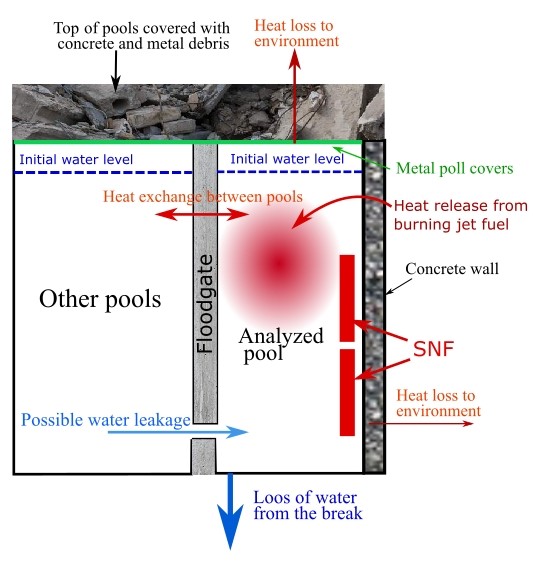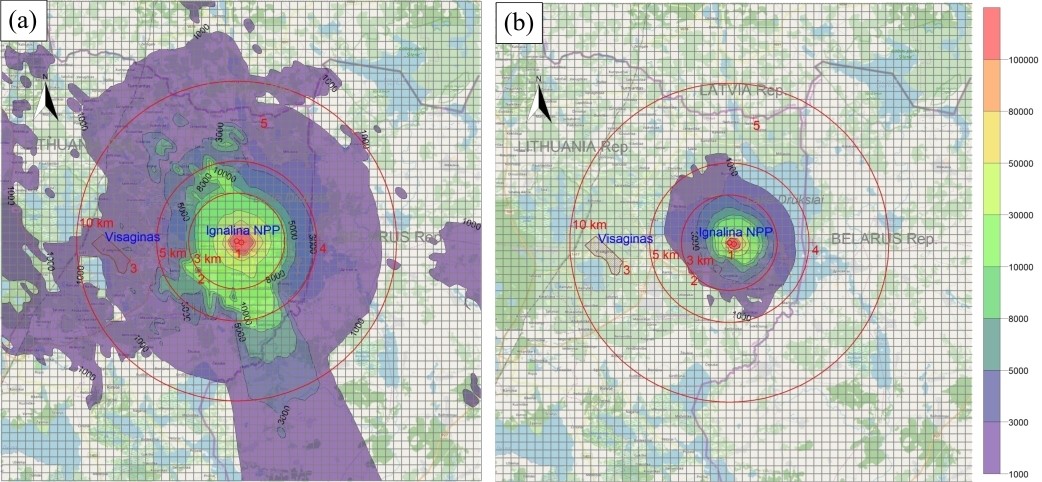Analysis of external events at Ignalina NPP in decommissioning phase

The Ignalina Nuclear Power Plant (INPP) was operated with two RBMK-1500 reactors for 21 and 22 years respectively. Since 2010, decommissioning has become the major activity at Ignalina NPP. Thus, during the decommissioning of the RBMK reactor(s), only the following hazardous objects can be identified at the plant site, which may cause significant releases of radioactive materials into the environment in case of external, unlikely events:
- Spent Nuclear Fuel (SNF) storage pools with spent fuel inside;
- Reactor core graphite stack under dismantling;
- Storage facilities for treated combustible waste (bitumen compound); and
- Storage facilities for solid raw combustible waste.
Considering these potentially hazardous objects of the Ignalina plant, LEI scientists provided the assessment of radiological consequences to the public in the case of extreme earthquake and large aircraft crash with the subsequent fire of aviation fuel. Such evaluation was performed with the purpose to collect and assess data, required for the updating of threat categories, emergency zones and (or) emergency distances for selected objects of the plant.
For the evaluation of the radiological consequences to the public it was needed to provide complex deterministic investigation, including the assessment of structural damage of compartments and equipment due to earthquake and large aircraft crash, evaluation of fire impact and loss of SNF cooling, release and dispersion of radionuclides, and assessment of the radiological doses to the population outside the plant site. It was decided additionally to evaluate the criticality of SNF in the storage pools, firefighting capabilities and possible accidents’ scenarios.
The results of the performed analysis allowed to state that during all considered accident scenarios any criticality event in SNF storage pools is not expected and the spent fuel assemblies placed in storage pools will not be overheated to the critical temperature causing the fuel rod damage. The important conclusion sounds that all considered accident conditions (including the aircraft crash and fire in the bituminized waste storage building, or in the reactor hall, or in the solid radioactive waste storage buildings) will not cause deterministic health effects to the public. All calculated doses are below limits established by national regulations.
Tadas Kaliatka
Lithuanian Energy Institute
tadas.kaliatka@lei.lt

